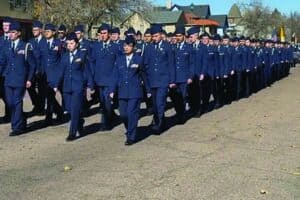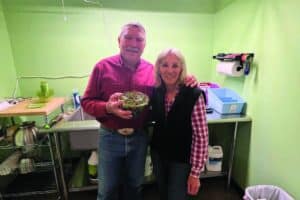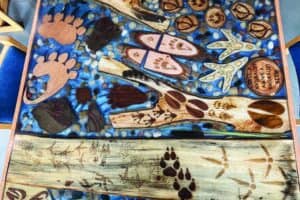Bonfires, myths, cakes, and prayers ó the origins of Halloween gives a much different understanding to the holiday.The period of Oct. 31 to Nov. 2 is known as Allhallowtide, which encompasses the Eve, and days of Saints and Souls. All Hallows’ Eve and All Saints’ Day both paid homage to saints (“hallows” equals saints), where All Soulsí Day was dedicated to all those who had passed on throughout the year.Halloweenís origins date back to the ancient Celtic festival of Samhain (SOW-in). From History.com, the Celts, who lived 2,000 years ago, mostly in the area that is now Ireland, the United Kingdom and northern France, celebrated their new year on Nov. 1. This day marked the end of summer and the harvest and the beginning of the dark, cold winter ó a time of year that was often associated with human death. Celts believed that on the night before the new year, the boundary between the worlds of the living and the dead became blurred. On the night of Oct. 31, they celebrated Samhain, when it was believed that the ghosts of the dead returned to Earth.By the ninth century, the influence of Christianity had spread into Celtic lands, where it gradually blended with and supplanted older Celtic rites. History states that in 1000 A.D., the church made Nov. 2 All Soulsí Day, a day to honor the dead. All Soulsí Day was celebrated similarly to Samhain, with big bonfires, parades and dressing up in costumes as saints, angels and devils. The night before, the traditional night of Samhain in the Celtic religion, began to be called All-Hallows Eve or All-hallowmas (from Middle English Alholowmesse, meaning All Saintsí Day).Trick or treating comes from a combination of Irish practices called souling and guising. According to History.com, poor people would visit the homes of wealthier families and receive pastries called soul cakes in exchange for a promise to pray for the souls of the homeownersí dead relatives. Known as “souling,” the practice was later taken up by children, who would go door to door asking for gifts such as food, money and ale.In Scotland and Ireland, young people took part in a tradition called guising, dressing up in costume and accepting offerings from various households. Rather than pledging to pray for the dead, they would sing a song, recite a poem, tell a joke or perform another sort of ìtrickî before collecting their treat, which typically consisted of fruit, nuts or coins.In the early 20th century, Irish and Scottish communities revived the Old World traditions of souling and guising in the United States. By the 1920s, however, pranks had become the Halloween activity of choice for rowdy young people.At the height of the postwar baby boom, trick-or-treating reclaimed its place among other Halloween customs. No longer constrained by sugar rationing, candy companies capitalized on the lucrative ritual, launching national advertising campaigns specifically aimed at Halloween.Today, Americans spend an estimated $2.6 billion on candy for Halloween, according to the National Retail Federation, and the day, itself, has become the nationís second-largest commercial holiday.Jack-O-Lanterns come from an Irish myth. From the Encyclopedia Britannica, the story is about Stingy Jack who tricked the devil for his own monetary gain. When Jack died, God didnít allow him into heaven, and the devil didnít let him into hell, so Jack was sentenced to roam the earth for eternity ó given only a piece of coal to light his path. In Ireland, people started to carve demonic faces out of turnips to frighten away Jackís wandering soul. When Irish immigrants moved to the U.S., they began carving jack-oí-lanterns from pumpkins, as these were native to the region.Versions of Halloween are celebrated elsewhere, too. In Mexico and Latin American countries, DÌa de los Muertosóthe Day of the Deadóhonors deceased loved ones and ancestors Nov. 1 and Nov. 2. In England, Guy Fawkes Day, which falls on Nov. 5, is commemorated with bonfires and fireworks.






